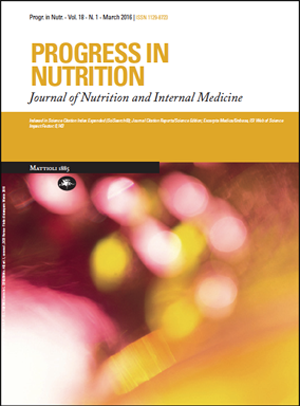Nutritional status and feeding practices in pre-school children aged 1-5 years in rural and urban areas of East Azerbaijan- Iran
Keywords:
malnutrition, underweight, stunting, wasting, Iran.Abstract
Backgrounds and Objectives: The current study was aimed to investigate the nutritional status of children under five-year of age and its associated factors in East Azerbaijan-Iran. Methods: Four hundred fifteen preschool children referring to public health centers in eight health centers in urban and rural areas of East Azerbaijan-Iran were selected. Nutritional status including height for age (HAZ), weight for age (WAZ) and weight for height Z-scores (WHZ) were calculated using the Epi-Info 2000 using the Centers for Disease Control and Prevention (CDC) 2000 standards. Results: Totally 17 (5.96%), 20 (7.01%) and 21 (7.36%) children from urban and 8 (6.15%), 11 (8.46%) and 11 (8.46%) children from rural areas were underweight, stunted and wasted respectively. The highest prevalence of underweight and wasting was observed in boys from rural areas (8% and 12% respectively); while the highest prevalence of stunting [6 (10.90%)] was observed in the girls of rural areas. The prevalence of severe wasting, stunting and underweight was 2.89%, 2.40% and 4.33% respectively. Weight for age z-score (WAZ) was non-significantly higher in children with proper complementary feeding practices; while all three indices of nutritional status were significantly higher in formula-fed children compared with exclusively-breast fed children (P < 0.05). Conclusion: In conclusion, the high prevalence of malnutrition among children under five-years of age and their poor feeding practices in the current study emphasizes the need for nutrition education and improving behavioral change practices in mothers as a target population.Downloads
Published
Issue
Section
License
This is an Open Access article distributed under the terms of the Creative Commons Attribution License (https://creativecommons.org/licenses/by-nc/4.0) which permits unrestricted use, distribution, and reproduction in any medium, provided the original work is properly cited.
Transfer of Copyright and Permission to Reproduce Parts of Published Papers.
Authors retain the copyright for their published work. No formal permission will be required to reproduce parts (tables or illustrations) of published papers, provided the source is quoted appropriately and reproduction has no commercial intent. Reproductions with commercial intent will require written permission and payment of royalties.

This work is licensed under a Creative Commons Attribution-NonCommercial 4.0 International License.


